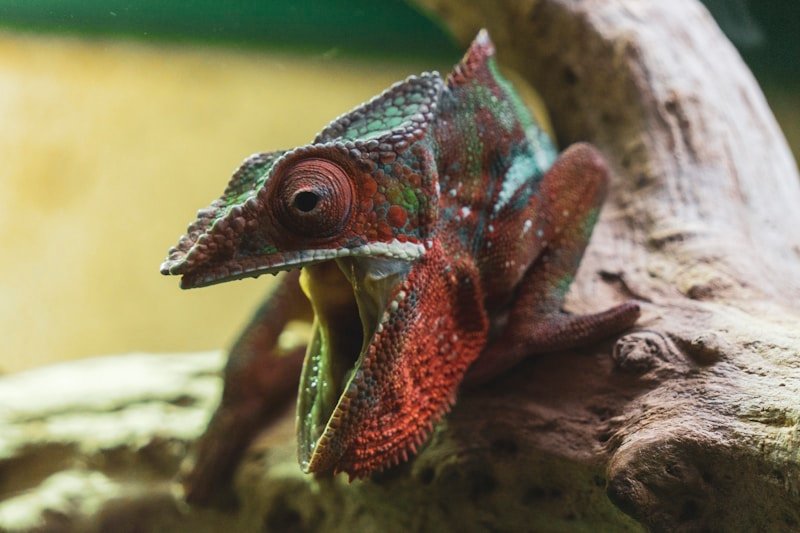Reptiles, with their scaly skin, cold-blooded metabolism, and unique adaptations, are some of the most fascinating creatures in the animal kingdom. From the arid deserts to lush rainforests, these creatures have managed to thrive in some of the harshest and most remote habitats on Earth. Embarking on an expedition to observe reptiles in the wild is an adventure that offers not just a glimpse into their lives but a chance to explore the intricate ecosystems where they reside.
In this article, we will take you on an imaginary expedition, delving into remote habitats and exploring the incredible diversity of reptiles that inhabit them. We will focus on four key regions: the deserts, rainforests, wetlands, and high-altitude mountain ranges, highlighting the unique species that call these places home.
1. Desert Habitats: Adaptations to Extreme Heat
Deserts are some of the harshest environments on Earth, where temperatures can soar to over 120°F (49°C) during the day and plummet to near freezing at night. Despite these extreme fluctuations, reptiles thrive in these conditions, showcasing incredible adaptability. From the venomous sidewinder rattlesnake to the charismatic desert iguana, reptiles in desert habitats have evolved special features to survive.
One of the most important adaptations of desert reptiles is their ability to regulate body temperature. Many reptiles in the desert are crepuscular, meaning they are most active during the early morning or late evening, avoiding the searing heat of midday. Additionally, reptiles like the Gila monster and the horned lizard have developed specialized skin and behavior that help them conserve moisture, essential for survival in arid conditions. Their ability to go for extended periods without water makes them masters of this barren terrain.
2. Tropical Rainforests: Hidden Diversity in the Canopy
In stark contrast to the dryness of the desert, tropical rainforests are a lush paradise where biodiversity thrives. These dense, humid jungles provide shelter to an astonishing array of reptile species, many of which are seldom seen by humans due to the thick canopy and the elusive nature of the animals. Here, reptiles have adapted to life in a rich, multilayered ecosystem where camouflage, agility, and keen hunting skills are crucial.
The rainforests are home to some of the most colorful and enigmatic reptiles, such as the green tree python, the poison dart frog (though not a reptile, often associated with the rainforest habitat), and the Amazonian glass frog. These species have developed remarkable camouflage techniques to avoid predators and to capture prey. For instance, the tree-dwelling emerald tree boa uses its prehensile tail to navigate the canopy, while the rainforest-dwelling chameleon can blend seamlessly with its surroundings.
Furthermore, rainforest reptiles often exhibit unique reproductive strategies. Many, such as the boa constrictor, give birth to live young, an adaptation that ensures the survival of the offspring in the highly competitive and sometimes perilous environment of the rainforest.
3. Wetland Habitats: Life on the Edge of Water
Wetlands, from swamps to marshes and mangrove forests, provide a unique intersection of land and water where reptiles such as alligators, crocodiles, and water snakes thrive. These environments offer abundant food resources like fish, amphibians, and invertebrates, but they also present challenges like fluctuating water levels and the risk of flooding.
One of the most iconic reptiles of the wetland habitat is the American alligator, which can be found lurking in the murky waters of the southeastern United States. Alligators are apex predators in these ecosystems, playing an important role in maintaining the balance by controlling the populations of smaller species. Similarly, the saltwater crocodile of northern Australia and Southeast Asia reigns as the largest and most powerful of all reptiles, capable of taking down prey as large as deer or water buffalo.
Reptiles in wetland habitats have developed specialized behaviors and physical traits to thrive in these environments. For example, the ability to stay submerged for long periods with minimal oxygen is crucial for survival, and many species, like the monitor lizard, have evolved to be excellent swimmers, using the water as both a source of food and a refuge from predators.
4. Mountainous Regions: High Altitude Survivors
The harsh, cold environments of high-altitude mountain ranges pose unique challenges for reptiles, as they are typically cold-blooded and require external heat sources to regulate their body temperature. Despite these challenges, several reptile species have adapted to life in the rugged terrain of mountains, where the air is thin and temperatures can dip below freezing.
In the Himalayas, the high-altitude Himalayan pit viper is a master of survival. These reptiles are active during the warmer months and hibernate in the colder seasons to conserve energy. Their color patterns help them blend into the rocky environments, making them nearly invisible to predators. In the Rocky Mountains of North America, the Western fence lizard has been observed surviving at elevations of up to 10,000 feet. Its ability to regulate body temperature by basking in the sun allows it to make use of short, fleeting warm periods in these chilly, high-altitude areas.
While reptiles at high altitudes may not be as numerous or diverse as in other habitats, their survival in these extreme conditions is a testament to the resilience and adaptability of the reptilian class.
Conclusion
Reptiles in the wild are some of the most resilient and adaptable creatures on Earth. From the scorching deserts to the humid rainforests, from waterlogged wetlands to the cold, barren mountain peaks, these reptiles have found their niches and continue to thrive in some of the most remote and challenging habitats on the planet. An expedition into these ecosystems offers a rare glimpse into the intricacies of nature and the ways in which life can adapt to the most extreme environments.
Whether you’re an avid wildlife enthusiast, a researcher, or simply someone fascinated by the wonders of nature, the reptiles of the wild provide a never-ending source of intrigue and admiration.

